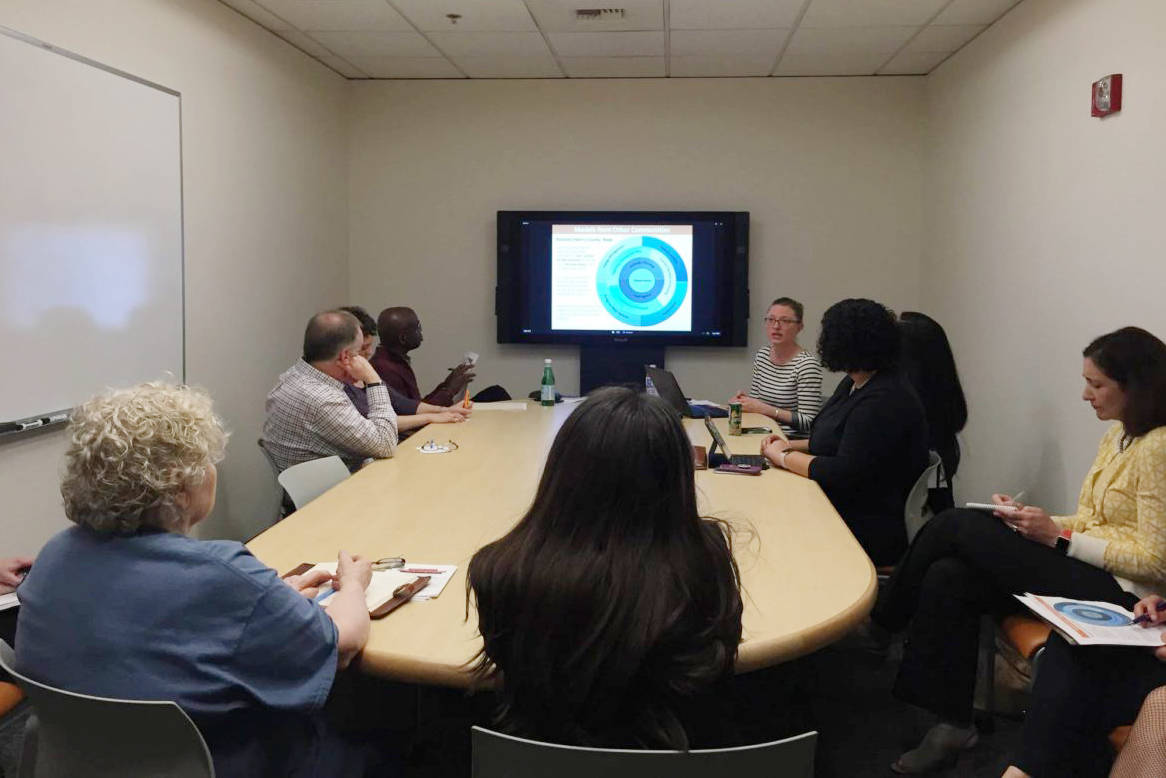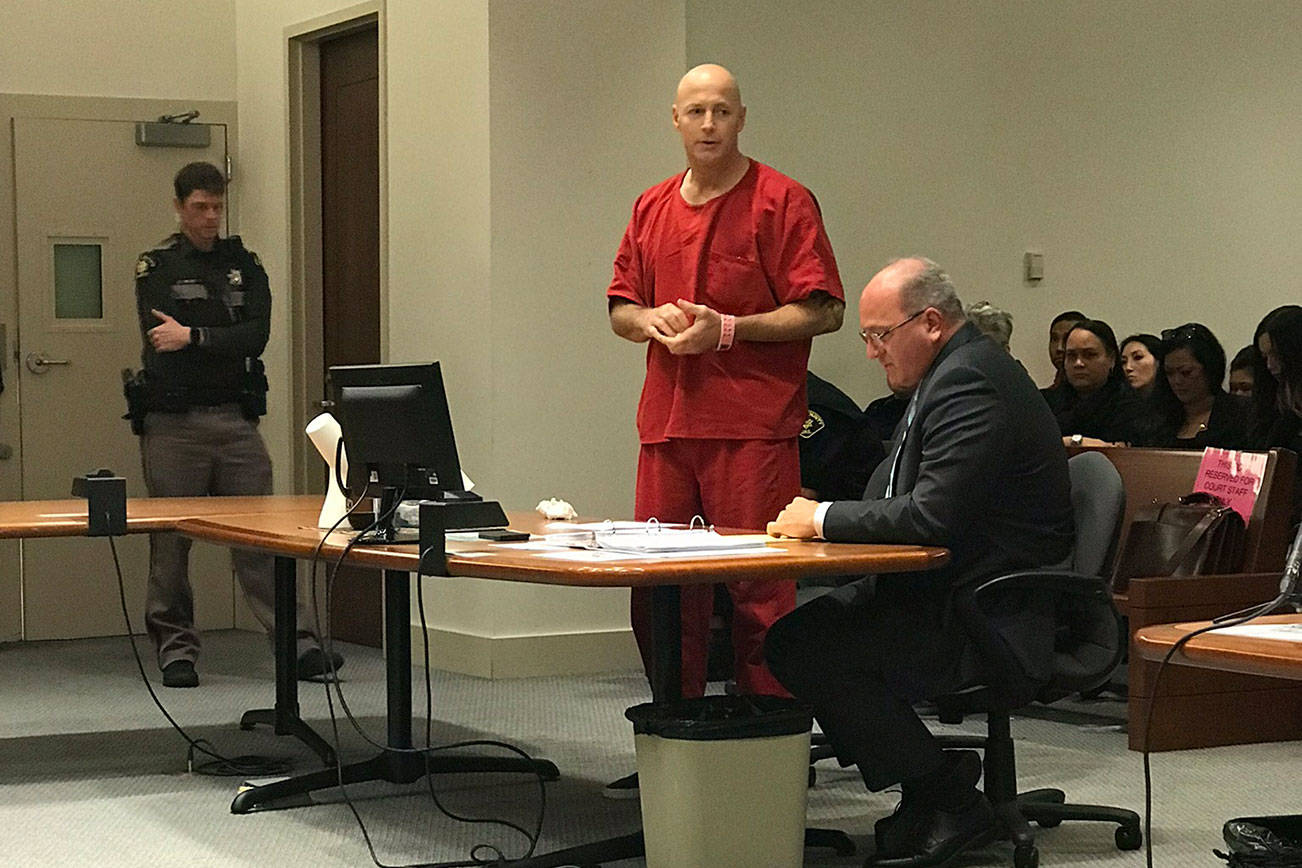All Home serves as King County’s official stakeholder group, tasked with coordinating regional efforts to address the homelessness crisis. But both current and former members have frustrations about All Home’s structural limitations, ones that hinder their ability to actually make a dent in the issue.
For starters, despite being tasked with aligning the work of King County’s various governments and the nonprofit sector on homelessness, All Home has no tangible authority over those entities or how they spend their money.
“We do not hold all authority and accountability for addressing homelessness in the region,” said Kira Zylstra, acting director of All Home at a special April 23 meeting on All Home’s structure and effectiveness. She added that the King County and Seattle agencies operate siloed from one another and with different levels of resources to address the crisis.
Formed in 2015, All Home—which is technically a part of King County government—succeeded its predecessor, the Committee to End Homelessness. That group, which was founded in 2005, developed a 10-year action plan to eradicate homelessness. When 2015 arrived and the committee’s goal of ending homelessness had clearly not been achieved, a reorganization was in order. (That same year, former Seattle Mayor Ed Murray and King County Executive Dow Constantine declared a “state of emergency” due to regional homelessness.)
“There was a decision to have a successor organization that would not abandon everything that had been done before, but kind of reboot it and figure out what we had learned, where we had been successful, and try to do something newer and better,” Daniel Malone, executive director of the Downtown Emergency Services Center and a board member of All Home, told Seattle Weekly in a phone interview.
All Home focused primarily on meeting requirements to apply for and administer federal funding for homelessness from the Department of Housing and Urban Development. Additionally, the organization drafted a strategic plan that centered on housing-first homelessness intervention model, which prioritizes housing people and continued support services for people once they have a roof over their head. This model was also pushed heavily by the Department of Housing and Urban Development, even attaching housing-first to its requirements for federal funding.
While the Committee to End Homelessness had embraced the housing-first philosophy as well, it was All Home that got it written into local public policy. In 2016, All Home got the Seattle and King County human services and housing departments to commit to collecting better data and holding non-profit contract recipients to housing-first-minded performance benchmarks (such as transitioning homeless individuals out of shelters and into permanent housing).
Malone credits All Home with helping spread the philosophy of housing-first throughout Seattle and King County government. “All Home really adopted that vision and said, ‘It doesn’t need to just be a program approach, it can be our whole system orientation,’ and got providers to buy into it, got government agencies to buy into,” he said.
“In the last couple of years, the housing first principles have really been built into contract language,” said Mark Putnam, the former executive director of All Home.
But critics argue that All Home fundamentally lacks the authority required to corral the region’s various bureaucracies to implement their plan.
“It’s kind of aspirational in it’s make up. You’re basically getting people together who all play different important roles related to tackling this problem, and hope that by pulling them together in this way there will be a lot of alignment in terms of the priorities and how the resources are being allocated,” said Malone. “Because All Home itself wasn’t set up to run it all or control the resources or all of the priority setting or that kind of thing. It’s never been capable of truly moving a plan forward.”
According All Home’s tabulation of data from the Homeless Management Information System (the county’s official homelessness database) the number of homeless people that have been transitioned into stable housing has increased steadily. That said, 2017’s numbers were still well below set targets.
Meanwhile, the overall homeless population has steadily increased. The 2017 annual one-night-count tallied over 11,000 homeless individuals. A recent federal report showed that King County has the third highest concentration of homeless people in the country.
Now there are even more chefs in the proverbial kitchen with the addition of a newer county initiative on homelessness—One Table. Formed in December 2017, One Table is a task force of homeless service providers, business leaders, and public officials selected by regional elected leaders to create a county-wide response to the growing homelessness crisis. It’s working to deliver a finalized series of recommendations by early May. In December, a county press release said the new task force would “synchronize a countywide community response” to the crisis, despite All Home’s standing role as the coordinator of homeless services in the region.
Draft recommendations from the One Table task force released in early April featured items like creating 5,000 units of affordable housing across the county, training and hiring over 1,000 individuals at-risk of homelessness over two years, and establishing on-demand behavioral health services. (The draft did not, however, feature ideas for revenue to pay for the services.) Critical members of the task force found the recommendations underwhelming given the scale of the homelessness crisis.
Putnam, who is a current member of One Table, said that the task force isn’t discussing reforming All Home or developing a new centralized agency to spearhead a regional homelessness response.
“I think there’s a real need to create a new oversight structure that would really succeed All Home and would really combine City of Seattle and King County resources,” said Putnam. “It’s less about All Home going away and more about what do we need for the next 10 years.”
In an interview for an upcoming episode of Seattleland, King County Executive Dow Constantine saidthat All Home will continue to operate after One Table’s recommendations are released in early May (though he didn’t address whether it will be reformed in the future to give it more authority). He said that All Home is primarily focused on housing, while One Table takes a comprehensive approach that includes other stakeholders, like those from the private sector. “The problem is accelerating and All Home wasn’t designed to be a table for absolutely everyone in the community who’s working on this. And it really has historically focused, although it has broadened, on housing.”
Constantine acknowledged that All Home lacks oversight authority of the regional homelessness response, which is part of the reason that One Table was brought together. “They don’t have the authority. So we’re trying to bring people to the table who have either the authority or the resources to be able to get to these root causes and slow down the inflow of people into homelessness. It’s absolutely critical.”
At the April 23 All Home board meeting, Zylstra pointed to several examples of centralized homelessness responses, such as the Portland/Multnomah County Joint Office of Homelessness, which was formed in 2016.
At the meeting, Katy Miller, Regional Coordinator for the United States Interagency Council on Homelessness, said that regions that have adopted joint-models have been successful in streamlining service provision.
Melinda Giovengo, an All Home board member and executive director at YouthCare, struck a more frustrated tone at the meeting and said that the region lacks a coherent and coordinated response to homelessness because there is inadequate funding to back up the various plans.
“We’ve gotten away from truly regional plans,” she said. “We make these things and they we don’t stick with them because the funding streams are so all over the place.”
“It would be helpful to know where the North Star is. Right now we just don’t have it,” she added. “From soup to nuts, who is going to pay for what?”
Over $195 million in federal, county, city, and philanthropic resources was spent on homelessness in 2017.
While Malone acknowledged that recreating All Home would have benefits, the scale of the crisis and the available resources to combat it are critically out of balance.
“The current homelessness situation in our area is not because of having an inadequate structure of how the homelessness dollars are spent,” he said. “We are overwhelmed with an influx of people entering homelessness due to the extreme rent price escalation. Everything needs to be understood within that context.”








